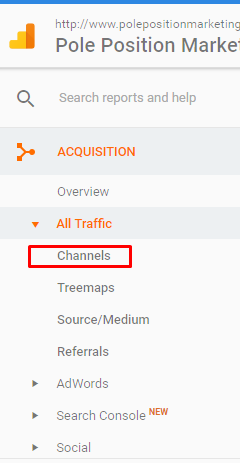
Ok, we all know that social media marketing is, like, totally awesome. It can boost your business’ exposure, traffic, yada, yada, yada. Some even say web marketing can’t survive without it. Oh wait, that was us. 😉
But in all of its awesomeness, there is a caveat about social media marketing: It takes time. A lot of it. Especially if you’re doing it right (i.e., actually engaging with your audience and not just posting links to your site). In fact, 63% of marketers spend 6 or more hours a week on social media marketing activities, and nearly 19% spend more than 20 hours a week!
Super overused gif, but amirite?
Sorry, I can’t magically take away all of your social media marketing duties (unless you want to outsource your social media marketing to us). But I do have some tips to speed the process along.
1. Limit It
We all know not to jump off a bridge just because everyone else does. Why then do so many businesses basically do just that when it comes to social media?
Nobody has time to engage on all of the networks they “should” be on. The only real reason to be on a social network is because your audience is there and you believe you can engage with them there. The first step, then, is to figure out where they are. This takes a little detective work, but it will save you time by narrowing down the networks you need to engage on.
Start slow, building a presence on the network that is most popular with your audience first. Once you have established your presence and have streamlined your participation there, then you can move on to the next most popular network for your audience. If your audience isn’t there, don’t waste resources on it, no matter how popular it may be in general.
2. Automate It
This is a bit of a touchy subject, but the bottom line is you have to automate some of your social media participation, unless social media is your only job. But just like any technology, social media automation can be abused. You should never automate responses. For example, you don’t want an automated tweet that says “Thanks for sharing” every time someone shares one of your tweets. You should always engage in real-time. That’s another reason you should take just one social network at a time, so that you can be sure you have the resources to respond in a timely manner when someone engages with your company on social media.
There are typically three types of social media tools you need to improve your efficiency:
- Scheduling: Scheduling tools allow you to plan your posts in advance so you don’t have to be on social media everytime you want a post to go out. I mostly use Buffer to schedule posts from our blog and curated content. I have also put a number of evergreen posts into Social Jukebox because, unlike Buffer, it will put the posts back into a queue to be continually re-published.
- Curation: You need easy ways to find valuable information from other experts that you can share. I like using Tweetdeck to monitor the streams of industry influencers. I also use the RSS reader Feedly to keep up with the best digital marketing blogs, and I subscribe to some forum digests and industry newsletters that also provide great articles to share. I recently discovered another tool called Nuzzel that creates a newsletter based on what your friends are engaging with on social media.
- Monitoring: You also need to know if someone talks about your business or industry on social media so that you can engage in those conversations and address any issues. Tweetdeck is good for monitoring Twitter streams, while Mention and SEMRush can help you keep tabs on your mentions across the internet.
3. Analyze It
Again, you’re not doing social media just to do it. You’re doing it to achieve certain goals for business. You have to decide what those goals are (brand awareness? traffic? sales?). Then you have to track your social media metrics to see if your efforts are working toward those goals.
A good place to start is Google Analytics. Traffic isn’t the be-all end-all of metrics, but you do want to make sure that your social media metrics are bringing in traffic and which ones are doing that the best.

If a network isn’t bringing in much traffic, you may want to reconsider what you are posting there or question if the network is worth your time at all. But keep in mind, traffic is only part of the story. If you are getting a lot of engagement (shares, likes, comments, etc.), you are raising your brand awareness and may want to keep on keepin’ on.
We like True Social Metrics to track engagement and to see which posts performed the best. Each social network offers its own analytics as well that can give you some of this information. Additionally. I often use Buffer’s analytics to determine which posts resonated with our audience and then reschedule them so they can be discovered by people who may not have seen them the first time.
The point is, you want to figure out what social media efforts are helping you meet your goals and which aren’t so you can spend your time on efforts that bring you ROI.
4. Time It
Social media has a well-earned reputation of being a time suck. Decide ahead of time how much time you are going to spend — even set a timer if you are prone to zoning out. Just make sure you are setting aside a sufficient amount of time to get the job done right.
No doubt about it, social media requires a time investment. But when done right, it’s one that reap big rewards for your company. Using these tips, you can fit social media marketing into your busy schedule without losing your mind!

